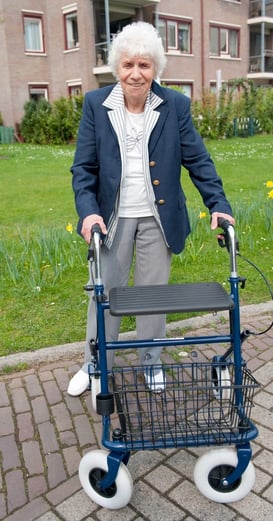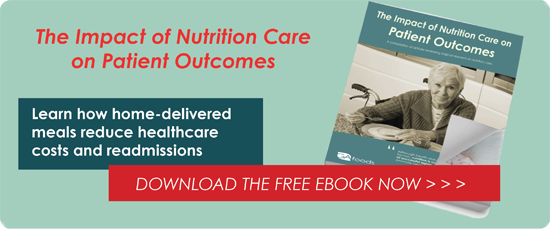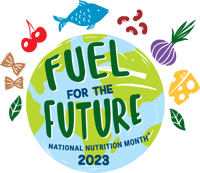 Not too long ago, I was walking through a neighborhood after a thunderstorm had passed by. I noticed an elderly woman with a walker, trying to cross the road. The recent downpour had created a wide puddle along the street that was several inches deep. She explained to me that she had new shoes on and she didn’t want to get them wet by stepping into the water. She needed to cross the street, because the bus that went to the local grocery store would be coming soon. We managed to get her across the puddle with minimal damage to her new shoes. I waited for the bus with her and found out grocery shopping was her Monday routine. Actually, it was her routine several times a week. She doesn’t have family nearby to help with shopping. During each trip to the grocery store, she buys only what will fit in the basket of her walker. After 15 or so minutes, the bus had not come. Since I do not rely on public transportation, it took awhile for me to realize that it was Memorial Day and the busses were not running on their regular schedule. I offered to get my car and take her to the store, but she decided her best option was to get back over that huge puddle and go back home. It was unsettling to me that she might not have food at home to eat. Unfortunately, there are too many seniors out there with the same issue.
Not too long ago, I was walking through a neighborhood after a thunderstorm had passed by. I noticed an elderly woman with a walker, trying to cross the road. The recent downpour had created a wide puddle along the street that was several inches deep. She explained to me that she had new shoes on and she didn’t want to get them wet by stepping into the water. She needed to cross the street, because the bus that went to the local grocery store would be coming soon. We managed to get her across the puddle with minimal damage to her new shoes. I waited for the bus with her and found out grocery shopping was her Monday routine. Actually, it was her routine several times a week. She doesn’t have family nearby to help with shopping. During each trip to the grocery store, she buys only what will fit in the basket of her walker. After 15 or so minutes, the bus had not come. Since I do not rely on public transportation, it took awhile for me to realize that it was Memorial Day and the busses were not running on their regular schedule. I offered to get my car and take her to the store, but she decided her best option was to get back over that huge puddle and go back home. It was unsettling to me that she might not have food at home to eat. Unfortunately, there are too many seniors out there with the same issue.
The annual report, State of Senior Hunger in America 2013, was released in April 2015. Per the report, a high proportion of seniors in the United States are going without food, despite an improving economy:
- 15.5% of seniors face the threat of hunger. This equals 9.6 million seniors.
- Seniors are more likely to be threatened by hunger if they:
- Of those that face the threat of hunger, the majority have incomes above the poverty line and are Caucasian
- The number of seniors experiencing the threat of hunger increased by 45% from 2001 to 2013.
Why are so many seniors hungry?
When I considered the circumstances of my new friend, my initial assessment was a lack of marketing – senior agencies just needed to do a better job of communicating the resources available for the elderly. Certainly, this woman would qualify for services, if she wanted them. She lived alone on a fixed income with limited mobility and no family support. Perhaps, she could get home delivered food or go to a nearby senior center for lunch. What about local agencies, didn’t they have a list of volunteers that could help her shop once a week?
However, the reality is this isn’t a marketing problem. It is a funding problem. According to the National Association of States United for Aging and Disabilities (NASUAD), funding for seniors is not keeping pace. From 1980 to 2010, the population of seniors (adults 65+) rose 60%, but funding for programs serving seniors declined by 34%. In 2010, 57.5 million adults (60+) were eligible for services, but only 11 million were served.
The President’s proposed budget for FY2016 expands access to Medicaid and home and community-based long-term care services and supports. It also provides $875 million for Nutrition Services programs, a $60 million increase over the 2015 enacted level, allowing States to provide 208 million meals to over 2 million older Americans nationwide. However, last week the Senate’s bill for funding nutrition programs in FY2016 did not contain an increase. The House bill provided only a $6 million increase for Older Americans Act Senior Nutrition Programs.
Food insecurity means additional health challenges and increased health expenditures
Numerous studies have shown that food insecurity1 is associated with poor nutrition and health outcomes among seniors. Food insecure seniors have worse health outcomes:
- They are 50% more likely to have diabetes
- Twice as likely to report fair or poor general health
- Three times more likely to suffer from depression
- 30% more likely to report limitations with at least one activity of daily living
- 14% more likely to have high blood pressure
- 60% more likely to have congestive heart failure or have experienced a heart attack
The authors of State of Senior Hunger in America 2013 suggest that potential opportunity to curtail the growth of health care expenditures among older Americans is to improve the problem of food insecurity.
 Home delivered meals for seniors as a health plan benefit
Home delivered meals for seniors as a health plan benefit
Progressive health plans have started adding home delivered meals as a benefit. More studies are needed to quantify the return-on-investment of those meals. But let’s look at what could have happened to my friend with the new shoes:
Her new shoes were expensive, orthopedic shoes. She probably had to save or sacrifice something else to buy them. They were so important to her that she was willing to risk a fall by hopping over the puddle to keep them dry. What if I had not walked by to help her cross the puddle? What if she had fallen? What if she had broken a hip? What if she was no longer able to remain in her home and had to go to a nursing facility?
A total hip replacement averages about $30,000 in this area, which is 10 times more than providing home delivered meals for seniors for one year. The average annual cost for a person on Medicaid in a nursing facility is $53,593 – more than 17 times the cost of healthy, home delivered meals for a year.
Aging in place
NASUAD reports that 92% of home delivered meal recipients say meals allowed them to remain in their homes. Allowing seniors to age in place is cost-effective. Perhaps even more important is it improves their well-being. The security, dignity, and quality of life that a senior experiences in their own homes is invaluable. Funding nutrition programs for seniors is a small price to pay.
Want more information on the impact nutrition has on patient outcomes? Download our free ebook here.
1The USDA defines food insecurity as consistent access to adequate food is limited by a lack of money and other resources at times during the year.











